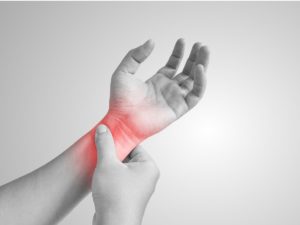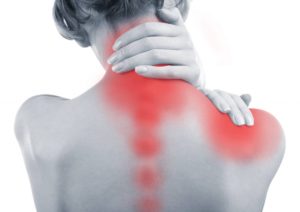Feeling of pins and needles down the arm? Tingling sensation in your hand or elbow? The post this week explores a possible cause for some of these symptoms you may be experiencing.
When you get numbness, tingling or the feeling of pins and needles anywhere in your body, one of the many causes of this feeling can be attributed to nerve entrapment. Nerves play a pivotal role in our body where they help us feel and move things all over our body. Being so important, they can also be very sensitive in nature and therefore prone to injury. One of the more common source of nerve related pain and sensation is caused by compression or entrapment of the nerve. Once the nerves become slightly compromised, you will begin to feel nerve related sensations such as pins and needles, tingling, numbness and slight loss of strength to the area the nerve innervates.
What is nerve entrapment/compression?
A nerve entrapment of compression is a term used to describe when a peripheral nerve becomes compressed by surrounding structures. Depending on the severity and duration of this compression, the symptoms felt for the individual can vary. A term commonly used to describe and categorise these entrapment are known as entrapment neuropathies. These entrapments occur within the peripheral nervous system which are your arms and legs commonly.

How does nerve entrapment occur?
A nerve entrapment can be broken down into two different kinds of nature, ischaemic or mechanical. A nerve can be compromised when there is repetitive injury and trauma causing changes to the nerve integrity and structure. As a result of this, the signals passing between these nerves become altered and hence causing nerve like symptoms.
Upper limb Peripheral Nerves
In today’s post, we will be exploring the peripheral nerves that innervate the upper extremity and how nerve entrapment in this region occurs and present with. There are 3 main peripheral nerves that branch off from the cervical plexus which innervate our upper extremities. These nerves are the median nerve, ulnar nerve and radial nerve. Each nerve of the arm runs through a different pathway affecting different regions of the arm and they all have either a sensory, motor or mixed component of function in the upper extremity.
Median nerve
Pathway: The median nerve runs from the brachial plexus passing through the armpit and running down the anterior (front) portion of the forearm and terminating in the hand.
Sensory Component: The median nerve supplies sensation to lateral (outside) 3.5 fingers of the hand and palm anteriorly (front).
Motor Component: The median helps innervate the motion of the forearm and the hand allowing it to flex at the wrist, turning inwards of the forearm and lateral (outside) bending of the hand.
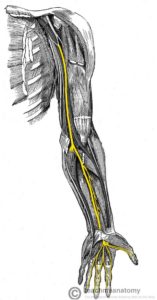

Radial nerve
Pathway: The radial nerve branches off the brachial plexus and passes through the posterior aspect of the arm down into the hand. The nerve runs through the back of the shoulder then towards the outside of the arm down into the back of the forearm and hand.
Sensory component: The radial nerve has 2 other branches of which it breaks off too supplying different areas of the arm. The superficial branch of the radial nerve helps innervate the back of the arm and forearm. This branch supplies sensory sensation to the posterior (back) of the lower 1/3 of the upper arm, the back of the forearm and back of the outside 3.5 fingers of the hand.
Motor Component: The radial nerve helps innervate and supply the muscles of the arm which helps with movement of the triceps (straightening of the arm) and extension of the wrist.
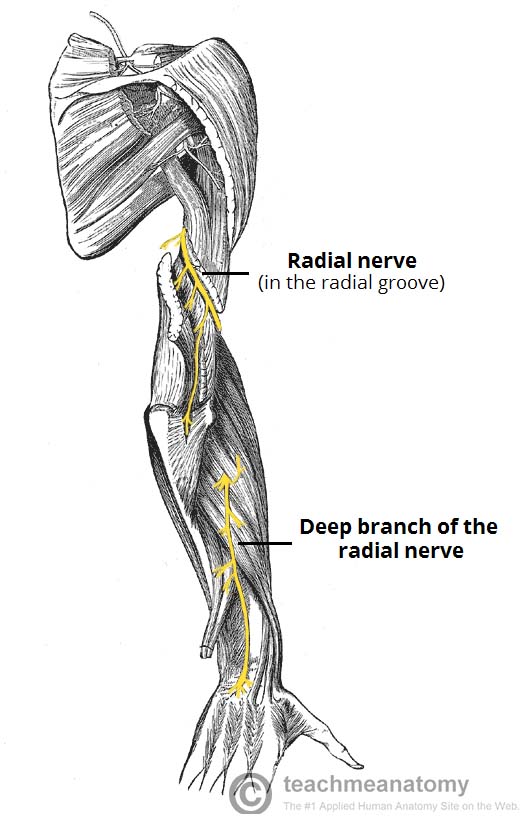
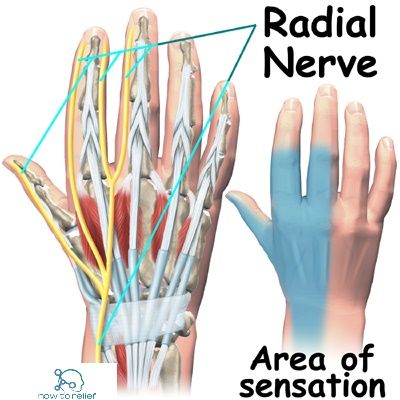
Ulnar nerve
Pathway: The ulnar nerve passes through the back and inside of the arm near the armpit and travels along the inside surface or the arm towards the elbow and continuing down the forearm and into the hand.
Sensory component: The ulnar nerve helps supply sensation and feeling to the inside forearm and 1.5 fingers of the hand both anteriorly (front) and posteriorly (back).
Motor component: The Ulnar nerve helps innervate the muscles of the hand allowing for it move the wrist and hand muscles. It helps with the movement of wrist inside bending and the function of the 4th and 5th finger.
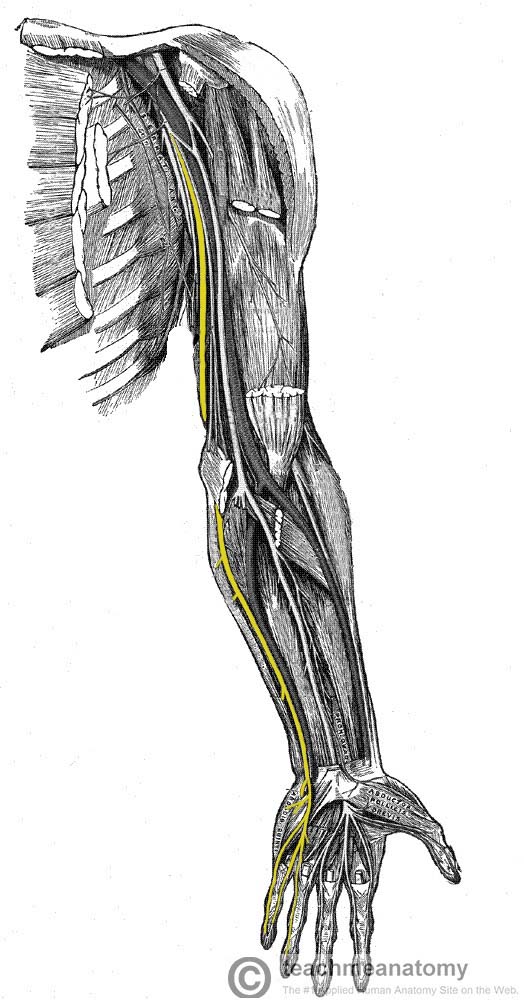
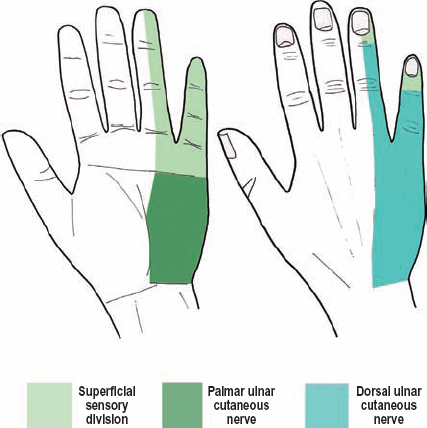
Symptoms of upper extremity nerve entrapments
Varying from person to person, the symptoms and presentation of nerve entrapment will differ based on the nerve being affected and the degree and duration of the entrapment. The most common symptoms present with any entrapments are:
- Localised or referred pain (along the pathways as mentioned above)
- Numbness, tingling or electric shooting pain
- Paresthesia
- Burning
- Muscle weakness
- Muscle Wasting (if long-term or heavy compromise)
- Impaired movement/coordination of supplied area (along pathways above)
All of the symptoms are common based upon the pathway of the nerve and the location of where the entrapment occurred. Therefore it will vary, however the general signs and symptoms will remain the same.
Exercises for nerve entrapments/nerve flossing
Depending on the severity of the entrapment, the treatment of this cause will vary. Generally, nerve entrapments are non-life threatening and can be manage conservatively and effectively. Here are a few exercises to try at home to help with the some of the symptoms felt at home to relieve some tension on the nerve itself. A note with a few of these exercises would be that, should you be experiencing early stages of the symptoms mentioned above, it’s recommended not to do these exercises unless advised by your doctor or physical therapist.
Nerve flossing is a set of exercises prescribed by doctors or physical therapist to help manage peripheral nerve entrapments. The idea of this technique is to provide some pain relief for the individual, as well as providing some movement and mobilisation of the entrapped nerve. Nerve flossing alone may not provide yourself with long-term relief, however coupled up with other exercises have shown to be quite useful in managing nerve entrapments.
Each of the exercises below come in two variations. The first one is the more aggressive exercise. Should the first one be too sore/painful, have a go at the alternate one for some relief. If both are bit sore and painful, cease the exercise and have it assessed.
Median Nerve Flossing


Median Nerve Flossing 1


Median Nerve Flossing 2
Ulnar Nerve Flossing


Ulnar Nerve Flossing 1


Ulnar Nerve Flossing 2
Radial Nerve Flossing


Radial Nerve Flossing 1


Radial Nerve Flossing 2
As mentioned always, the above recommendation are just general tips and tricks to try out home should you begin to experience these signs and symptoms. Should you be suffering from these symptoms, it’s imperative to have this assessed properly and have a personalised rehab and recovery program set out to gain the maximum benefits and results. If the symptoms worsen or not improving, please don’t hesitate to contact us and have is assessed properly. Here at Health House Clinics, we are all qualified to help assess and treat multiple musculoskeletal conditions, peripheral nerve entrapments being one of them.
References:
https://www.medicalnewstoday.com/articles/nerve-flossing
https://www.physio-pedia.com/Nerve_entrapment
Meng S, et al. Longitudinal gliding of the median nerve in the carpal tunnel: Ultrasound cadaveric evaluation of conventional and novel concepts of nerve mobilization. Archives of physical medicine and rehabilitation. 2015.
Rutkove SB, Overview of upper limb extremity peripheral nerve syndromes, Shefner M J, Goddeau R P. UpToDate. Retrieved February 20th 2022, from https://www-uptodate-com.simsrad.net.ocs.mq.edu.au/contents/overview-of-upper-extremity-peripheral-nerve-syndromes?search=nerve%20entrapment&source=search_result&selectedTitle=2~122&usage_type=default&display_rank=2#H37
https://teachmeanatomy.info/upper-limb/nerves/


